Being a remote worker offers a large amount of autonomy and flexibility, it also comes with some unique challenges. Staying focused, being transparent, and communicating clearly and effectively are imperative to success in remote work. Recently I discussed with a group of Metovian remote workers the tools they rely on. Although we found these tools to be helpful in a remote working context, they are undoubtably useful for in-office use as well.
Communication & Notes
Most of our mobile app developers keep written notes in a notebook whenever they speak with a client or coworker, either jotting down important conversations or keeping a running log. Some use digital tools including: A personal space on Confluence, Evernote, Google Keep, the Notes app on mac (and then exported to Evernote for posterity once in a while).
For voice communication, most use a Google Voice number. This allows them to keep our number private while still being able to share contact info with clients. Additionally, the voicemail on Google Voice has a transcription feature so we can receive your voicemails in text format.
To-Do’s
There are a lot of to-do apps out there, but the consensus of the group was actually to go old school and use paper and pen. Some of our app developers also ocasionally use the built-in Notes app on their Macs for their todos. Other than story and issue tracking in Flux (our internal tool) and JIRA, most people did not use a specific todo app.
If you are looking for an actual todo program , there are a couple you may want to try. Workflowy is a list app that can be used for todo’s or other list-based data such as shopping lists, idea lists, etc. Things allows you to create recurring items that will only appear when they are due, keeping your list uncluttered. With Flow, you can create groups of lists (projects), tag team members, and view a calendar of your tasks.

Time-Keeping
While Metova no longer tracks time down to the minute, knowing where you time goes can be very beneficial. Do you feel like you never have enough time? Track your time for a bit and see if tasks are taking you longer than expected or if that quick 5 minutes you spent checking Facebook was really 30.
Rescue Time is personal analytics service that shows you how you spend your time and provides tools to help you be more productive. Toggl and Hours Tracker are both easy to use and free time keeping / timelog apps.
Text Editors
Depending on the platform you develop for there are specific applications you may use such as XCode for iOS and Android Studio. In addition to these, TextWrangler has a handy compare tool that lets you compare two files side by side. SourceTree has a built in diff tool you can use by right clicking on a conflicted file and selecting use external diff tool. Atom and Sublime are popular as well.
Programming Helpers
Text Expander was a favorite used by many. Some use XCode’s internal code snippet tool. A great program is GistBox which uses public or private gists on github to store your code snippets. Snippets can be tagged and shared. GistBox paid accounts allow for team accounts.
Utilities
PopClip appears when you select text with your mouse on your Mac. Click the link which will take you to the Mac App Store.
CheatSheet displays all the keyboard shortcuts when you hold the Command key on your Mac. That key is configurable. Click the link to go to the site where you can download it. It is a 3rd party application, but it is still used widely inside Metova.
Mouse Locator is a tool to surround your mouse with green circles to draw attention to it, which is helpful during presentations to draw the client’s eye to something important. The site looks questionable, but the application is perfectly functional and is not any sort of security risk. Click the link to go to the site where you can download it. 
Sharing Information
Evernote was mentioned for note sharing between developers. If you get a team account, you can share Workflowy lists as well. Google Docs and Google Sheets are widely used when we need to have multiple people collaborate on a file at once. Changes can be seen in real time, allowing multiple people to edit or comment at once.
If you are working with a visual learner, use Skitch or Preview (on Mac). They have annotation capabilities that make capturing image data and adding comments to screenshots easy to share.
Instead of using the built-in screen capture software, you can try Skitch or Snag-It. Did you know you can copy a screenshot to your clipboard rather than saving it to desktop on Mac by using shift-cntrl-cmd-4?
Image Editing
Preview (on Mac) actually came up as pretty common for simple image edits just as cropping and resizing. For more complicated things Lightroom, Photoshop and Pixelmator were used as well as the free GIMP.
Icon and Image Assets
Icons8, Google, Flat Icon and Noun Project have nice selections of icons. If you are looking for images, take a look at our previous blog post, Top Four Sites for Great Stock Photography.

Computer Backup
Back Blaze is an online backup package which provides unlimited data with a $5/month per machine cost.
Managing Information
Both One Tab and Session Buddy are browser extensions for reducing the number of open tabs you have without losing your place. Gmail and Google Calendar are usually used through the browser but Inbox was popular. Software-wise there is a Mac app called Mailbox that puts Gmail and Google Calendar access in your system bar. There is also a Chrome extension called Checker Plus which does the same thing in Chrome. Both allow multiple accounts and are very handy.
What tools do you like to use?
